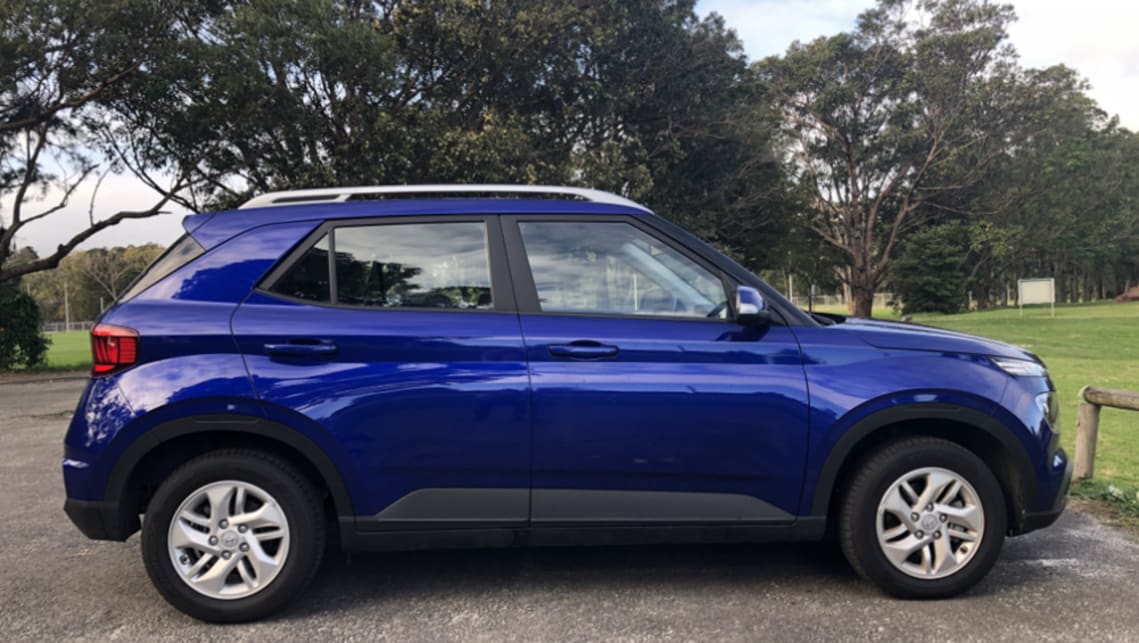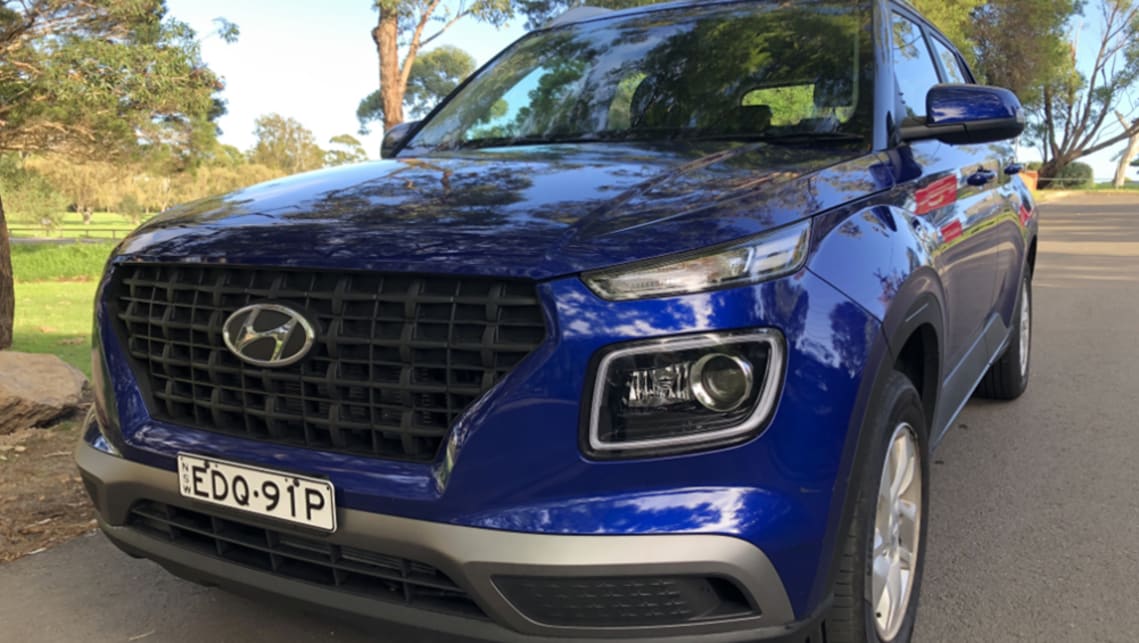This, ladies and gentlemen, is the Hyundai Venue, and while it might not be one of the attention-grabbing flagship models in the Korean brand's line-up - like the i30 N or incoming Palisade - it remains one of the most important vehicles in its range.
See, the Venue acts as the entry point to the Hyundai family (and, more importantly, the brand's SUV line-up), essentially filling the role that was, until recently, played by the now-axed Accent small car.
And it's a super important role, too. You'll hear brands talk about the importance of customer loyalty, which is the idea that, if you get a P-plater into one of your cheaper vehicles and that person has a good experience, they're likely to grow with the brand as their financial circumstances improve. You might start in a Venue, for example, but you should then upgrade to a Tucson, or a Santa Fe, and - eventually - maybe even a Palisade.
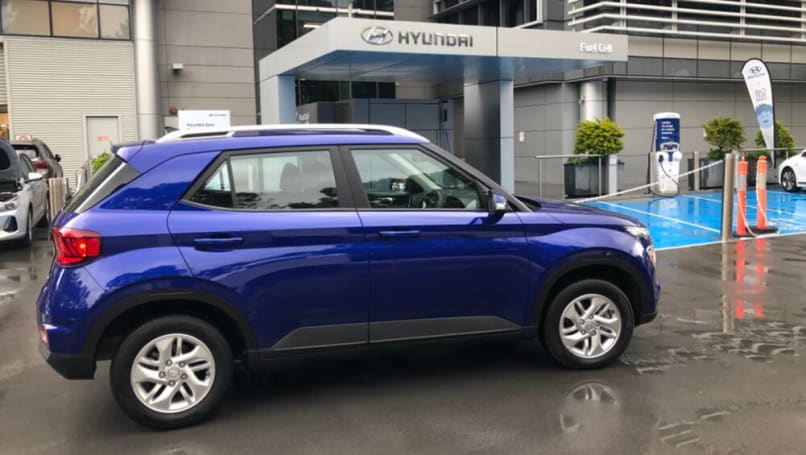
Or to put it another way, first impressions matter. And for lots of Hyundai customers, the first impression they get of the brand will be in the price-conscious Venue.
So, this car matters. A lot. And we've been handed the keys for three months to see just what kind of impression the Venue makes. But before we get to the fun stuff, let's get the basics out of the way first.
Our test car is a Hyundai Venue Active - the best-selling trim level - and the brand has helpfully steered clear of the options list, so what you see here is what you get in a dealership.
The Active forms the middle rung on the Venue ladder, sitting above the cheapest Go and below the most expensive Elite.
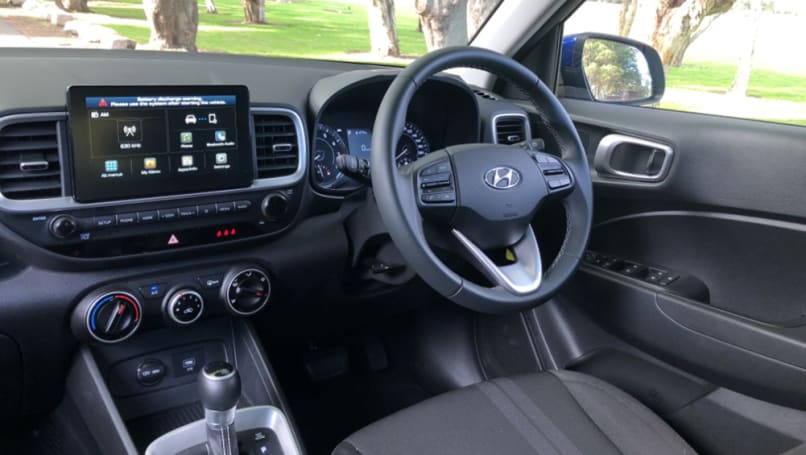
You'll pay around $22,690 (drive-away) for the Go, while the Elite is a crazy $29,240 (again drive-away). I say crazy, because $30,000 buys you a lot of i30, for example, and is more expensive than a Tucson Active, and about the same money as a well-equipped Tucson Active X.
To be fair, the Go does feel a little like a stripped-out entry-level model (you don't even get a middle armrest in the front, and you'll have to make do with steel wheels), but our Active, which hits a pretty sweet spot a $24,700 (drive-away), delivers almost every you might want at that price point.
For example, aside from the cloth seats and hard plastic used in the cabin, there's a heap of really quite nice-feeling kit on offer. The Active gets a six-speaker stereo that pairs with an eight-inch touchscreen. And because Apple CarPlay and Android Auto arrive as standard, you can access navigation, podcasts, driving playlists and more through your phone.
Elsewhere there's 15-inch alloy wheels, LED DRLs, bending headlights that move with the steering wheel, a leather-wrapped shift knob and steering wheel, powered and heated wing mirrors, power windows and central locking.
Honestly, I don't think you'll want for much in the Active, and there's nothing on the Elite's standard features list that makes it feel worth the price jump.
If you want to feel even better about not springing for the top-spec car, consider this; there is only one engine option across the Venue family, no matter how much you spend.
In other words, Go, Active or Elite, you're still rocking the same drivetrain - a 1.6-litre, four-cylinder petrol engine good for 90kW and 151Nm. It can be had with a six-speed manual in the Go or Active, but we opted (and we suggest you do, too) for the six-speed automatic transmission that makes city driving utterly fuss free.

Hyundai tells us you can squeeze 45 litres of 91RON fuel into the Venue's tank, which - according the claimed/combine fuel use of 7.2L/100km - should unlock around 625kms per tank.
A final word on safety before we get stuck into what the Venue is actually like to live with. Brands like Hyundai deserve much credit for making most of the important safety stuff standard across the range.
In the Venue, for example, even the Go gets Forward Collision Warning with AEB that detects both cars and pedestrians, a Driver Attention Warning, Lane Keeping Assist, a reversing camera with guide lines, dusk-sensing headlights and halogen DRLs. And that's good in a car that costs a whisker over $20k.
Stepping up to our car, the Active, unlocks largely the same set of safety kit, but don't view that a negative. Safety should be democratic. Still, the Venue range only wears a four star ANCAP safety rating, performing well in the adult occupancy crash tests (91 per cent), but losing points for a lack of super advanced safety kit (62 per cent).
Welcoming any new car to the long-term garage is exciting. Usually when we test a car, we take the keys for a week or so, and then spend that time trying to put it through as many real-life simulations as we possibly can, from city runs to longer drives, freeways to twisting roads, and everything in between.
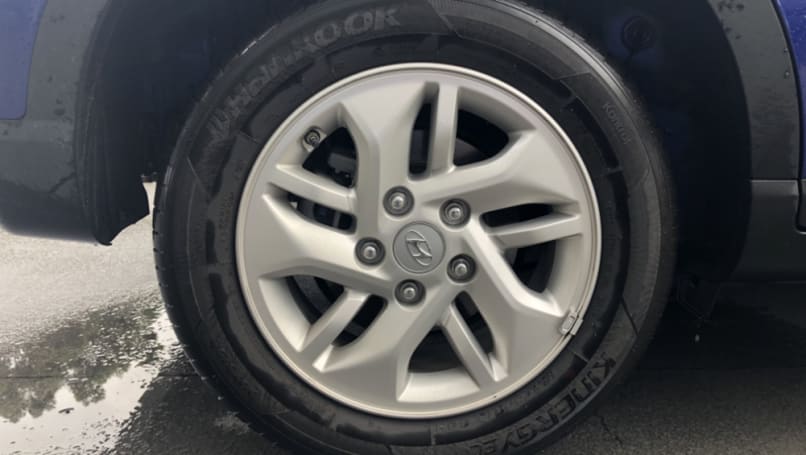
But simulations will only get you so far, which is why taking ownership of a car for several months always - always - spills more secrets.
And given you now know everything you need to know about the Venue Active, the only thing left is to see how it fits into my little family's (my wife, Sarah, our little corgi, Poppy, and myself) life in inner Sydney.
Acquired: March 2020
Distance travelled this month: 676km
Odometer: 3067km
Average fuel consumption for [month]: 9.0L/100









